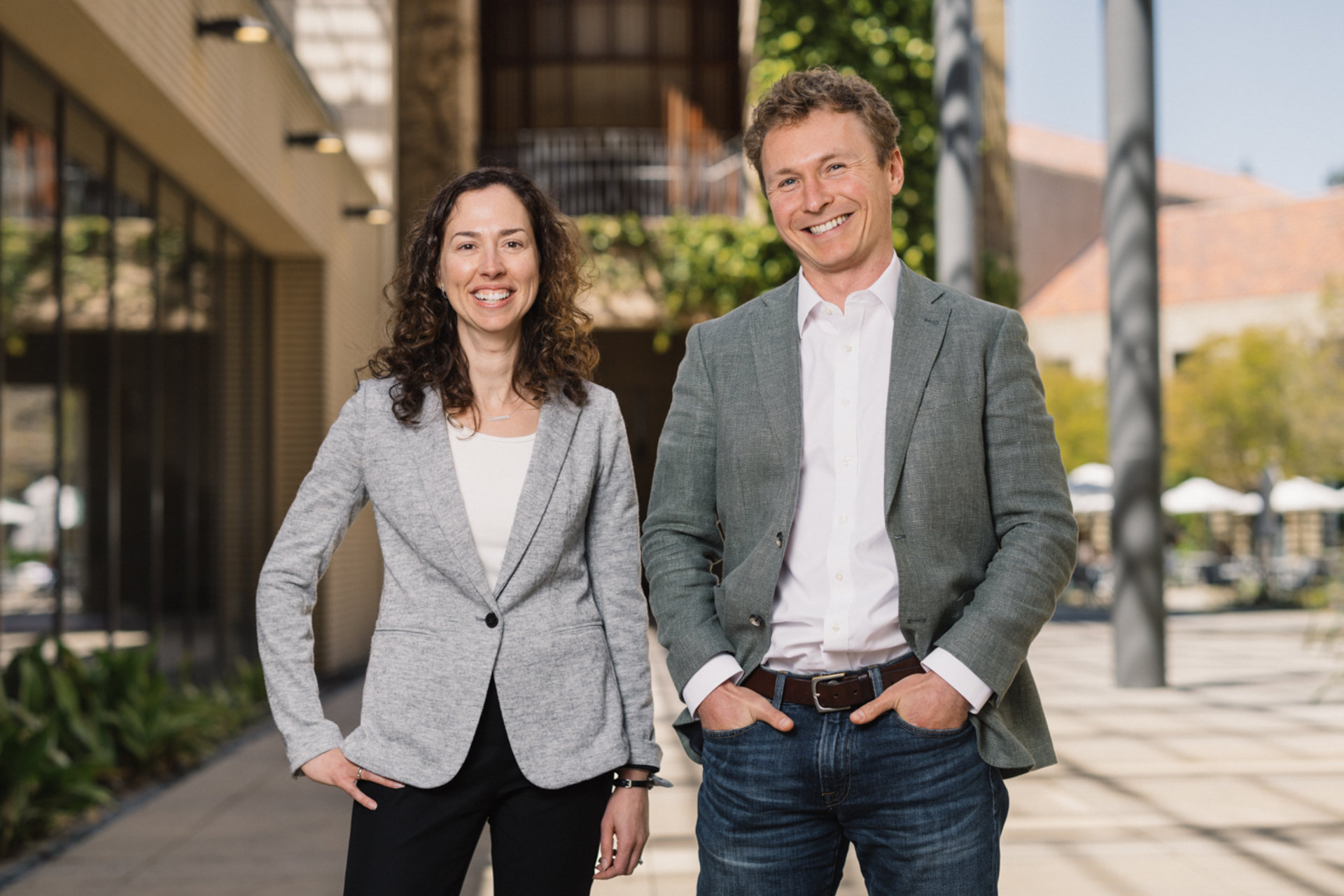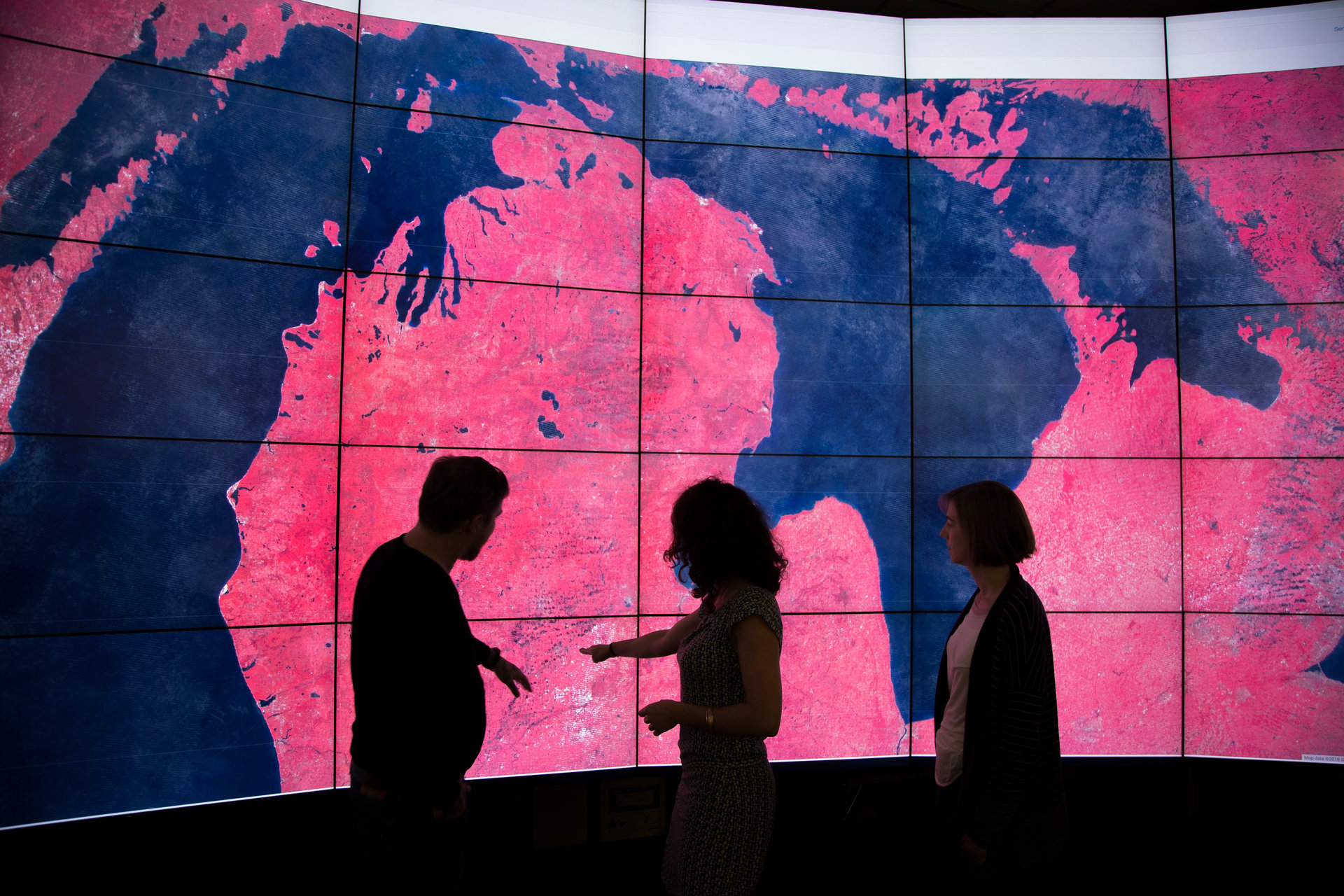Stanford Doerr School of Sustainability signs an Education partnership with the Naval Postgraduate School
The agreement creates partnerships to explore and address the increasing challenges of global climate change, energy security, and sustainability.
The Stanford Doerr School of Sustainability has entered into an Education Partnership Agreement with the Naval Postgraduate School (NPS) in Monterey to explore and address the increasing challenges of global climate change, energy security, and sustainability.

In a brief ceremony Dec. 15 on the Naval Postgraduate School grounds, Arun Majumdar, inaugural Dean of the Doerr School of Sustainability, and NPS President Vice Adm. (ret.) Ann E. Rondeau formally signed the agreement. Secretary of the Navy Carlos Del Toro presided over the ceremony.
“This agreement with NPS and the Stanford Doerr School of Sustainability is an example of how we are approaching sustainability challenges like climate change,” said Majumdar. “We are creating a network of local and global partners who work alongside our scholars to find and scale solutions, and who provide opportunities for our students to gain hands-on knowledge. Bringing together the expertise and facilities of Stanford and NPS will advance research, education, and impact to benefit all people.
The education agreement serves as a gateway to establish cooperative education opportunities, collaborate on applied research efforts, and work together on larger strategic initiatives aimed to address climate and energy security issues, and leverages the strengths of two globally recognized academic centers. In particular, the agreement leverages the newly formed Oceans department and the facilities of Hopkins Marine Station.
Under this cooperative effort, Stanford and NPS students and faculty will expand on existing collaborations and pursue new opportunities to learn and work alongside each other in pursuit of joint research solutions to climate change, which has become the most complex and vexing challenge currently threatening the world.
“Bold climate action is a mission imperative for the Department of the Navy, and we must harness all of the tools at our disposal in order to make urgently needed change,” said Del Toro. “This collaboration between the Naval Postgraduate School and Stanford University will bring together two globally recognized hubs of research and innovation, focused on realizing solutions that our Navy and our nation can employ now and in the future.”
In the Department of the Navy’s climate strategy, “Climate Action 2030,” Del Toro identified climate change as “one of the most destabilizing forces of our time.” Rising sea levels, recurring flooding, extreme heat, drought and more frequent and destructive storms threaten U.S. Navy and Marine Corps installations in the continental U.S. on a regular basis, as well as impacting everyday operations at sea around the world.
Together, the combined innovation ecosystems of the two organizations will seek to deliver solutions at speed and scale, enabling climate-informed, data-driven decision-making by naval and national leaders. The climate research, discoveries, and solutions made by students and faculty from Stanford and NPS will provide opportunities to develop, understand and improve upon multiple jointly developed technologies.
“The combination of expertise, operational experience, education, and entrepreneurship in this partnership with Stanford and their Doerr School of Sustainability is truly unique and a powerful contribution to the global climate challenges ahead of us all,” said Rondeau. “We are grateful to Secretary Del Toro for his leadership and support of this partnership. Together we all share the same sense of urgency and bias for action. The problems of climate change cannot be solved in isolation. This agreement between NPS and Stanford takes our respective education and applied research to new levels, empowering our people to operationalize their ideas and innovations in pursuit of shared goals.”
Additional details on this collaboration and opportunities will be provided in the coming weeks and months.
Explore More
-
The Stanford Forum on the Science of Energy Transition brought together scientific experts, technology innovators, and industry leaders to explore practical pathways to a decarbonized future.
-
A unique hands-on class teaches Stanford Law School students how to work with early-stage companies that have the potential to move the needle on climate and sustainability.
-
The first group of scholars supported under the new Sustainability Accelerator Fellowship program will focus on the challenge of removing billions of tons of greenhouse gases annually from Earth’s atmosphere by the middle of this century.



